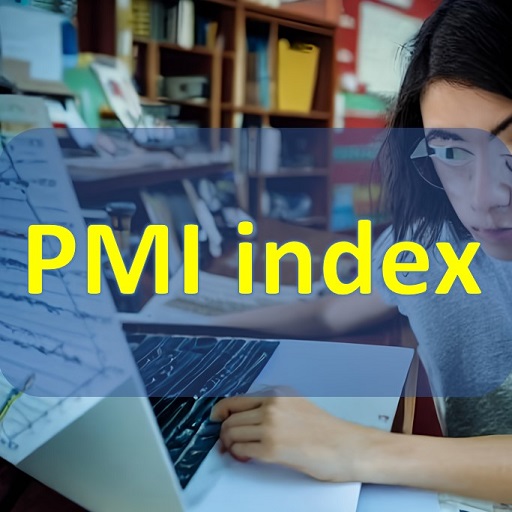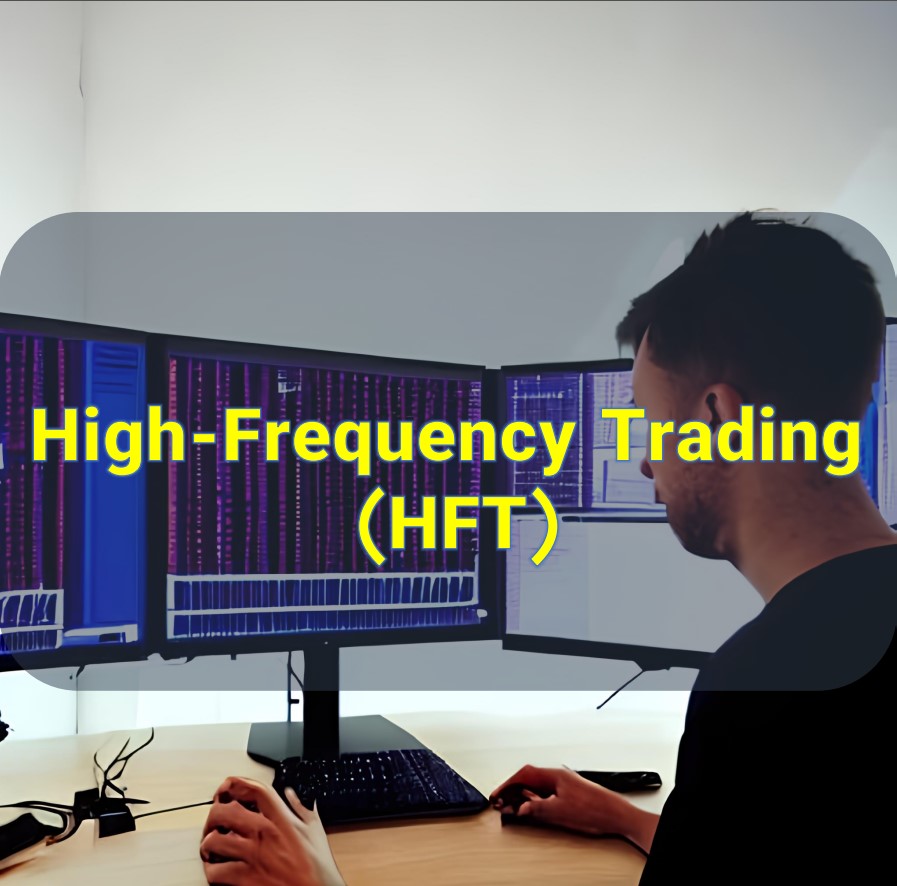In the context of Forex (foreign exchange) trading, the term “PMI index” refers to the Purchasing Managers’ Index. The PMI is an economic indicator that provides insight into the manufacturing or services sector of a country. It is used by traders and analysts to assess the economic health and future prospects of an economy.
The PMI index is based on a survey conducted among purchasing managers in various industries, such as manufacturing, construction, and services. The survey typically covers factors such as new orders, production levels, employment, supplier deliveries, and inventories. The responses are compiled into an index that reflects the overall economic activity within the sector.
A PMI reading above 50 generally indicates expansion in the sector, suggesting positive economic growth. Conversely, a reading below 50 suggests contraction and potential economic slowdown. Traders and investors in the Forex market often monitor the PMI index as a leading indicator of economic trends. Strong PMI figures can be seen as positive for a country’s currency, while weak PMI figures can have a negative impact.
It’s important to note that the PMI index is specific to each country or region and is released on a monthly basis. Traders and analysts compare the current PMI reading with previous months’ data to identify trends and make informed trading decisions in the Forex market.
Components of the PMI
The PMI index is typically composed of sub-indices that represent different aspects of the surveyed sector. For example, in the manufacturing PMI, sub-indices may include new orders, production, employment, supplier deliveries, and inventories. Each sub-index provides information about specific factors affecting the sector’s performance.
Impact on currency markets
Forex traders closely monitor PMI data because it can influence currency exchange rates. A higher-than-expected PMI reading is generally considered positive for the respective country’s currency. It suggests a robust economic performance, potentially leading to increased investment and higher interest rates. This, in turn, may attract foreign capital and strengthen the currency. Conversely, a lower-than-expected PMI reading may have a negative impact on the currency.
Market reaction
When PMI data is released, currency markets may experience increased volatility as traders react to the news. Positive PMI data can lead to an initial surge in the currency’s value as traders respond to the favorable economic outlook. Conversely, negative PMI data can result in a currency depreciation as traders adjust their positions based on the weaker economic conditions.
PMI and monetary policy
Central banks also consider PMI data when formulating monetary policy. Strong PMI figures can influence central banks to adopt a more hawkish stance, signaling a potential increase in interest rates. Conversely, weak PMI figures may prompt a dovish approach, with central banks potentially considering rate cuts or other stimulus measures.
International comparisons
Traders often compare the PMI data of different countries or regions to assess relative economic strength. If one country’s PMI shows stronger expansion compared to another, it may imply that the currency of the former is likely to perform better than that of the latter. Such comparisons can help traders identify potential trading opportunities or anticipate currency movements.
Remember that Forex trading involves a range of factors, and the PMI index is just one piece of information to consider. It’s important to conduct comprehensive analysis, considering multiple indicators, news events, and market trends to make informed trading decisions.
Who uses the PMI index?
The PMI index is used by various stakeholders, including:
Traders and Investors
Forex traders, equity traders, and investors across different financial markets utilize the PMI index to assess the economic health and potential investment opportunities in a particular country or region. The index provides insights into the overall economic activity and can influence trading decisions.
Central Banks
Central banks monitor the PMI index as part of their economic analysis and policy formulation. PMI data helps central banks gauge the strength of the manufacturing and services sectors, which are crucial components of the overall economy. It can influence monetary policy decisions, such as interest rate adjustments and the implementation of stimulus measures.
Analysts and Economists
Financial analysts and economists use the PMI index to study economic trends, forecast economic growth, and analyze the business cycle. By examining the PMI data over time, analysts can identify patterns and make predictions about the direction of the economy.
Businesses and Managers
The PMI index is valuable for businesses and managers, particularly those operating in the manufacturing and services sectors. It provides an indication of the overall business conditions, allowing companies to adjust their production levels, inventory management, and hiring decisions based on the prevailing economic environment.
Government Agencies
Government agencies and policymakers utilize the PMI index to assess the health of specific sectors, evaluate policy effectiveness, and make informed decisions regarding economic planning and development strategies. The index helps in understanding the performance of industries and identifying areas that may require targeted support or intervention.
Overall, the PMI index is a widely recognized economic indicator that is utilized by various stakeholders to gain insights into the performance of specific sectors and make informed decisions related to investments, policies, and business strategies.
What is the use of the PMI index for traders?
For traders, the PMI index serves as a valuable tool for several purposes:
Assessing Economic Health
Traders use the PMI index to evaluate the overall economic health of a country or region. A higher PMI reading indicates expansion in the surveyed sector, suggesting positive economic growth. This information helps traders gauge the strength of the economy and make informed decisions about trading strategies.
Identifying Trading Opportunities
By monitoring the PMI index, traders can identify potential trading opportunities. Strong PMI figures may indicate a favorable economic environment, which could lead to increased investment and potentially strengthen the country’s currency. Traders can look for opportunities to go long on the currency or consider investments in related assets.
Predicting Currency Movements
The PMI index can influence currency exchange rates. Traders analyze the PMI data to anticipate currency movements. A higher-than-expected PMI reading may result in a currency appreciation, while a lower-than-expected reading can lead to currency depreciation. Traders use this information to make short-term or long-term currency trading decisions.
Volatility and Risk Management
The release of PMI data often leads to increased market volatility. Traders consider the potential impact of PMI announcements on currency markets and adjust their risk management strategies accordingly. They may implement measures such as setting appropriate stop-loss levels, reducing position sizes, or avoiding trading during periods of high volatility.
Comparing Economic Performance
Traders compare the PMI data of different countries or regions to assess relative economic performance. If one country’s PMI shows stronger expansion compared to another, it may imply that the currency of the former is likely to outperform the latter. Traders can use this information to identify potential currency pairs or markets that offer favorable trading opportunities.
Anticipating Central Bank Actions
Central banks closely monitor PMI data when formulating monetary policy. Traders analyze the PMI index to anticipate potential changes in interest rates or other monetary policy measures. By staying informed about the PMI data, traders can position themselves ahead of central bank decisions and potentially benefit from resulting currency movements.
It’s important to note that while the PMI index provides valuable insights, traders should consider other factors as well, such as geopolitical events, interest rate differentials, and technical analysis, to make well-rounded trading decisions.
What is the role of the PMI index in the stock market?
The PMI index can play a role in the stock market in the following ways:
Economic Outlook
The PMI index provides insights into the overall economic activity and health of a country or region. This information is crucial for stock market participants as it helps them gauge the broader economic outlook. A higher PMI reading suggests a growing economy, which can have a positive impact on corporate earnings and investor sentiment. Traders and investors analyze the PMI data to assess the potential direction of stock markets.
Sector Performance
The PMI index is often segmented into sub-indices that represent different sectors, such as manufacturing, construction, and services. This breakdown allows stock market participants to understand the performance of specific sectors within the economy. Traders and investors use the sector-specific PMI data to identify industries that are experiencing growth or contraction, which can inform their investment decisions. For example, a strong manufacturing PMI reading may indicate potential opportunities in stocks related to manufacturing companies.
Market Sentiment
The PMI index can influence market sentiment and investor confidence. Positive PMI figures generally reflect economic expansion and can boost investor optimism. This positive sentiment can lead to increased buying activity in the stock market, potentially driving stock prices higher. Conversely, weak PMI data can create uncertainty and dampen investor sentiment, resulting in selling pressure and potential declines in stock prices.
Earnings Expectations
The PMI index can provide insights into the earnings expectations for companies within specific sectors. Strong PMI readings may suggest increased demand for goods or services, which could translate into higher revenues and profitability for companies operating in those sectors. Traders and investors analyze the PMI data in conjunction with corporate earnings forecasts to make informed decisions about stock selection and portfolio allocation.
Impact on Interest Rates
The PMI index can influence monetary policy decisions by central banks. If PMI data indicates robust economic activity, central banks may consider raising interest rates to curb inflationary pressures. Changes in interest rates can have a significant impact on stock markets, affecting borrowing costs, company valuations, and investor behavior. Traders closely monitor PMI data to anticipate potential shifts in monetary policy, which can help them adjust their stock market strategies accordingly.
It’s important to note that while the PMI index can provide valuable insights, stock market participants should consider other fundamental and technical factors, as well as market sentiment, to make well-rounded investment decisions.
What is the manufacturing PMI?
The manufacturing PMI (Purchasing Managers’ Index) is an economic indicator that measures the performance of the manufacturing sector within a particular country or region. It provides insight into the business conditions, expansion or contraction of manufacturing activities, and overall economic health within the manufacturing industry.
The manufacturing PMI is based on a survey conducted among purchasing managers in the manufacturing sector. Purchasing managers are responsible for making purchasing decisions for their companies, including procurement of raw materials, equipment, and other supplies necessary for production. The survey typically covers various factors such as new orders, production levels, employment, supplier deliveries, inventories, and prices.
The manufacturing PMI is presented as an index number, typically ranging from 0 to 100. A reading above 50 indicates expansion in the manufacturing sector, suggesting that manufacturing activities are growing. Conversely, a reading below 50 suggests contraction, indicating a decline in manufacturing activities.
The manufacturing PMI is considered a leading indicator as it provides insights into the current economic conditions and offers a glimpse into future trends. Traders, investors, policymakers, and analysts closely monitor the manufacturing PMI to assess the performance of the manufacturing sector, gauge the overall economic activity, and make informed decisions regarding investments, policies, and economic strategies.
It’s important to note that the manufacturing PMI is specific to each country or region and is usually released on a monthly basis. By tracking the manufacturing PMI over time, analysts can identify patterns, trends, and potential turning points in the manufacturing sector, which can have implications for the broader economy and financial markets.
How to calculate the PMI index
The PMI (Purchasing Managers’ Index) is calculated using a survey-based methodology. The exact calculation methodology may vary slightly depending on the organization or institute conducting the survey, but here is a general overview of how the PMI index is typically calculated:
Survey
A survey is conducted among purchasing managers in the relevant sector, such as manufacturing or services. The survey usually consists of a set of questions related to various aspects of business conditions and activity within the sector.
Sub-Indices
The survey responses are typically categorized into sub-indices that represent different factors or components. Common sub-indices in the manufacturing PMI include new orders, production levels, employment, supplier deliveries, inventories, and prices.
Data Collection
The purchasing managers provide their responses to the survey questions. The responses are often in the form of binary answers (e.g., “up” or “down”) or numerical ratings (e.g., on a scale of 0 to 100).
Weighting
Depending on the specific methodology used, certain sub-indices may be assigned different weights based on their relative importance in the overall index. This weighting can vary across different PMI calculations.
Calculation
The PMI index is typically calculated using a formula that aggregates the sub-indices. The formula may involve weighted averages or other statistical calculations to derive the final PMI reading.
Threshold
The PMI index is usually set to have a threshold of 50. A reading above 50 indicates expansion or growth in the sector, while a reading below 50 indicates contraction or decline.
Index Reporting
The PMI index is reported as a single number for a given period, typically on a monthly basis. This number represents the overall health or activity level of the sector based on the survey responses.
It’s important to note that the specific calculation methodology and data collection process may differ among different PMI surveys conducted by various institutions. Each organization may have its own unique approach to calculating and reporting the PMI index.
How is the PMI index used?
The PMI (Purchasing Managers’ Index) is used in several ways across different sectors and by various stakeholders. Here are some common uses of the PMI index:
Economic Analysis
The PMI index is a key economic indicator used to analyze the health and performance of specific sectors within an economy. It provides valuable insights into the expansion or contraction of business activities, overall economic growth, and potential changes in the business cycle. Economists, analysts, and policymakers study the PMI index to assess economic trends, forecast future growth, and make informed decisions.
Business Planning
The PMI index helps businesses and managers in their planning and decision-making processes. By tracking the PMI data, companies can assess the prevailing business conditions within their sector and adjust their production levels, inventory management, and hiring strategies accordingly. The PMI serves as a forward-looking indicator that assists in anticipating changes in demand and adjusting business operations.
Investment Decisions
Investors, including institutional investors and portfolio managers, use the PMI index to gain insights into specific sectors and make informed investment decisions. The PMI data can indicate areas of potential growth or decline, which can influence investment strategies, asset allocation, and stock selection. A strong PMI reading in a particular sector may lead to increased investment interest, while a weak PMI reading may prompt caution or reevaluation of investment positions.
Forex and Currency Trading
The PMI index is closely monitored by Forex traders as it can impact currency exchange rates. Strong PMI data is generally seen as positive for a country’s currency, indicating economic expansion and potential interest rate increases. Traders analyze the PMI data to anticipate currency movements and make trading decisions based on the expected impact on exchange rates.
Monetary Policy
Central banks consider the PMI index as part of their monetary policy decision-making process. The PMI data helps central banks assess the economic health of specific sectors and make informed decisions regarding interest rates, monetary stimulus, or other policy measures. Central banks may adjust monetary policy based on PMI readings to support economic growth, manage inflation, or address economic imbalances.
Market Sentiment
The PMI index can influence market sentiment and investor confidence. Positive PMI figures often result in increased optimism, driving positive sentiment and potentially boosting stock markets. Conversely, weak PMI readings can create uncertainty and dampen investor confidence, leading to increased caution or bearish sentiment.
Overall, the PMI index is widely used as a key economic indicator for analyzing sectors, forecasting economic trends, guiding business decisions, and influencing investment strategies across multiple sectors and markets.
Identifying financial market recession and growth with the PMI index
The PMI (Purchasing Managers’ Index) can provide insights into the potential for financial market recession or growth. Here’s how the PMI index can be used in this context:
Expansion and Contraction
The PMI index is typically set to have a threshold of 50. A reading above 50 indicates expansion in the sector, suggesting growth and positive economic conditions. On the other hand, a reading below 50 suggests contraction, indicating a decline in economic activity. When the PMI remains consistently above 50 over a sustained period, it suggests a growing economy, which can be associated with a potential for financial market growth. Conversely, a sustained PMI below 50 may signal economic weakness and potential market recession.
Trend Analysis
By tracking the PMI index over time, analysts can identify trends and patterns. A sustained upward trend in the PMI index may suggest a growing economy and potential market expansion. Conversely, a consistent downward trend in the PMI may indicate an economic slowdown and potential market contraction. Trend analysis of the PMI can help identify shifts in the business cycle and provide insights into the potential direction of financial markets.
Leading Indicator
The PMI index is considered a leading indicator, providing insights into the current and future economic conditions. Changes in the PMI tend to precede changes in economic growth and can offer early indications of potential market shifts. A significant decline in the PMI index may signal an impending economic downturn and potential market recession, while a sharp increase in the PMI may suggest improving economic conditions and potential market growth.
Correlation with Financial Market Performance
There is often a correlation between the PMI index and financial market performance. In general, a strong PMI reading and positive economic outlook can be associated with bullish market sentiment and potential market growth. Conversely, a weak PMI reading and negative economic outlook can lead to bearish market sentiment and potential market decline. However, it’s important to note that other factors, such as interest rates, geopolitical events, and investor sentiment, can also influence financial market performance.
While the PMI index can provide valuable insights into economic conditions and potential market trends, it is important to consider it in conjunction with other economic indicators, fundamental analysis, and market dynamics. No single indicator can predict financial market movements with certainty, and a comprehensive analysis of multiple factors is necessary for making well-informed investment decisions.







